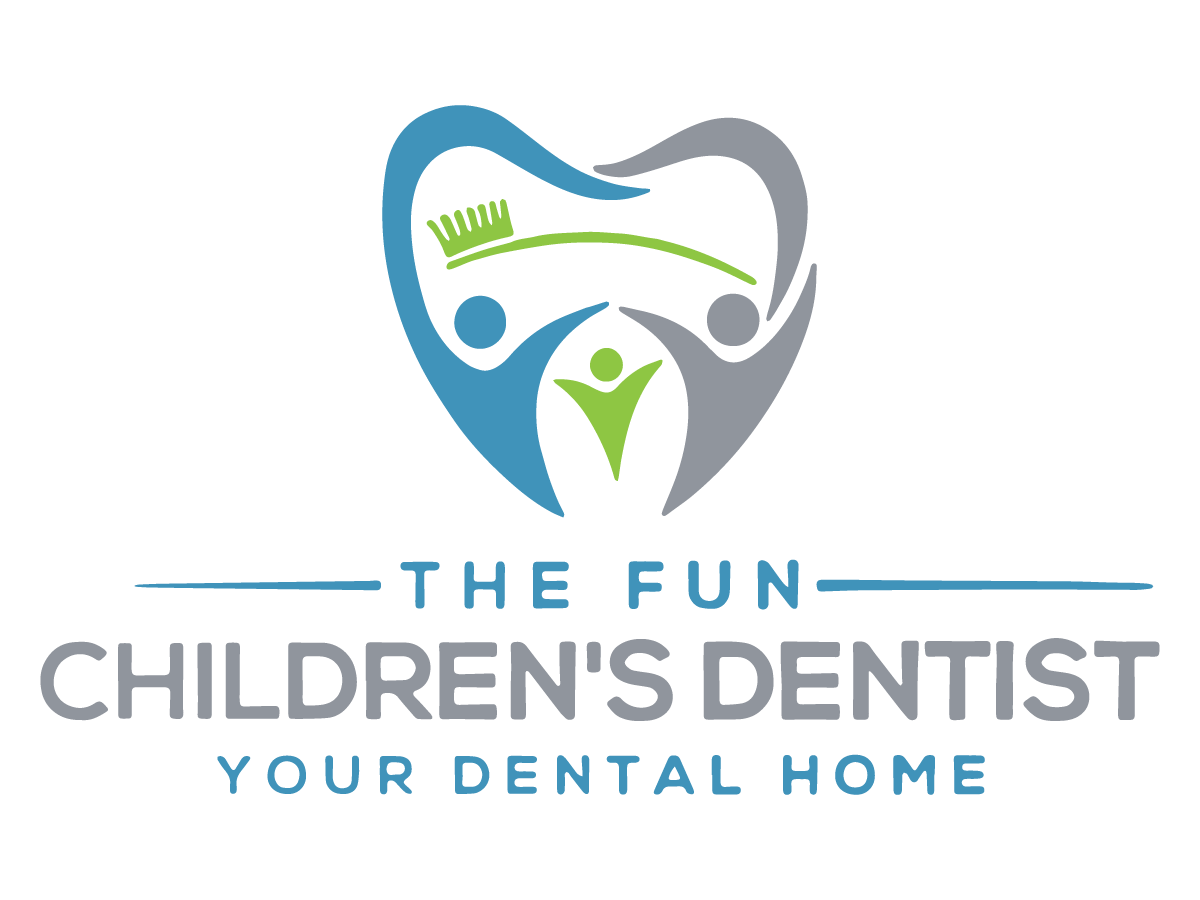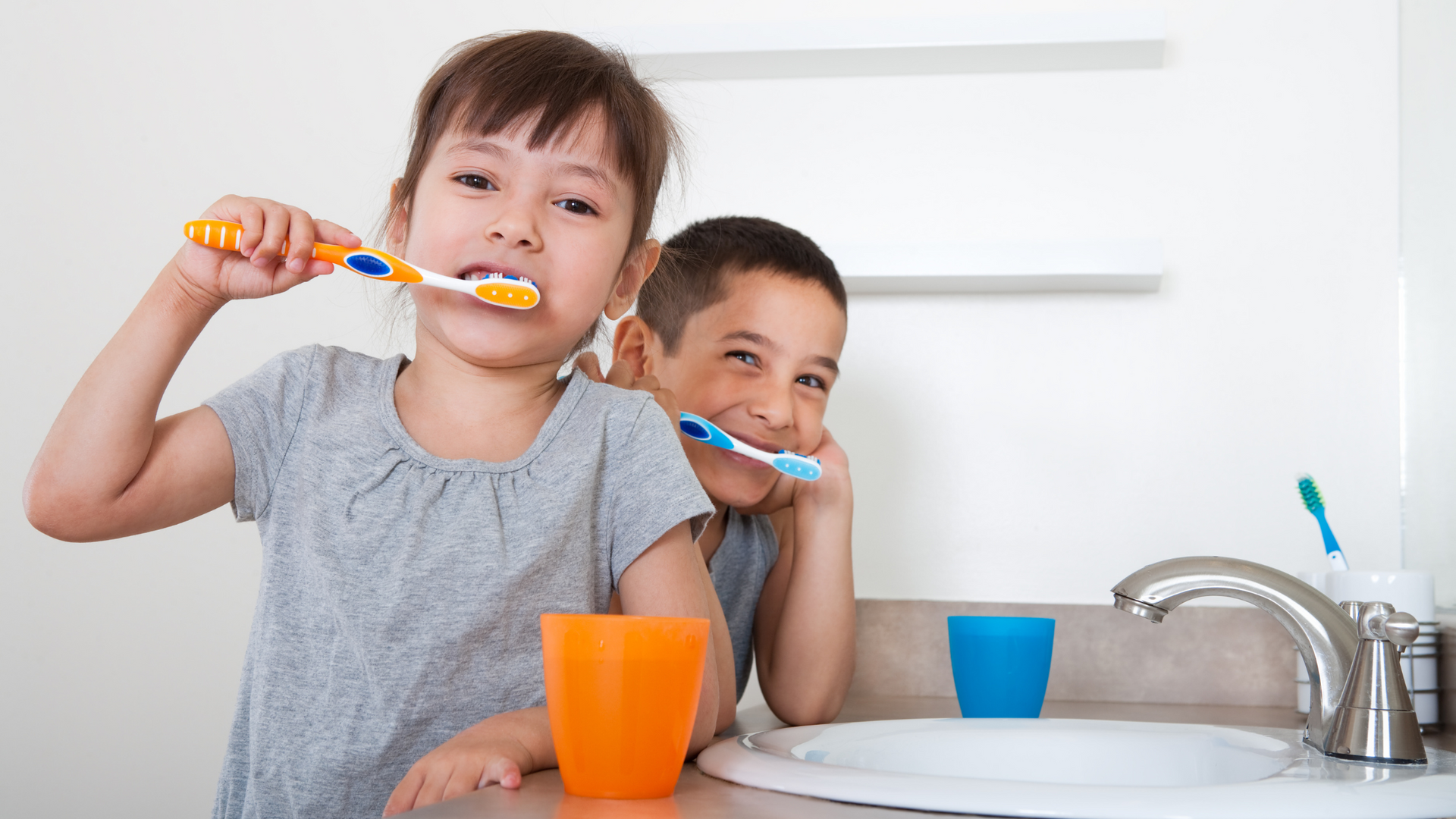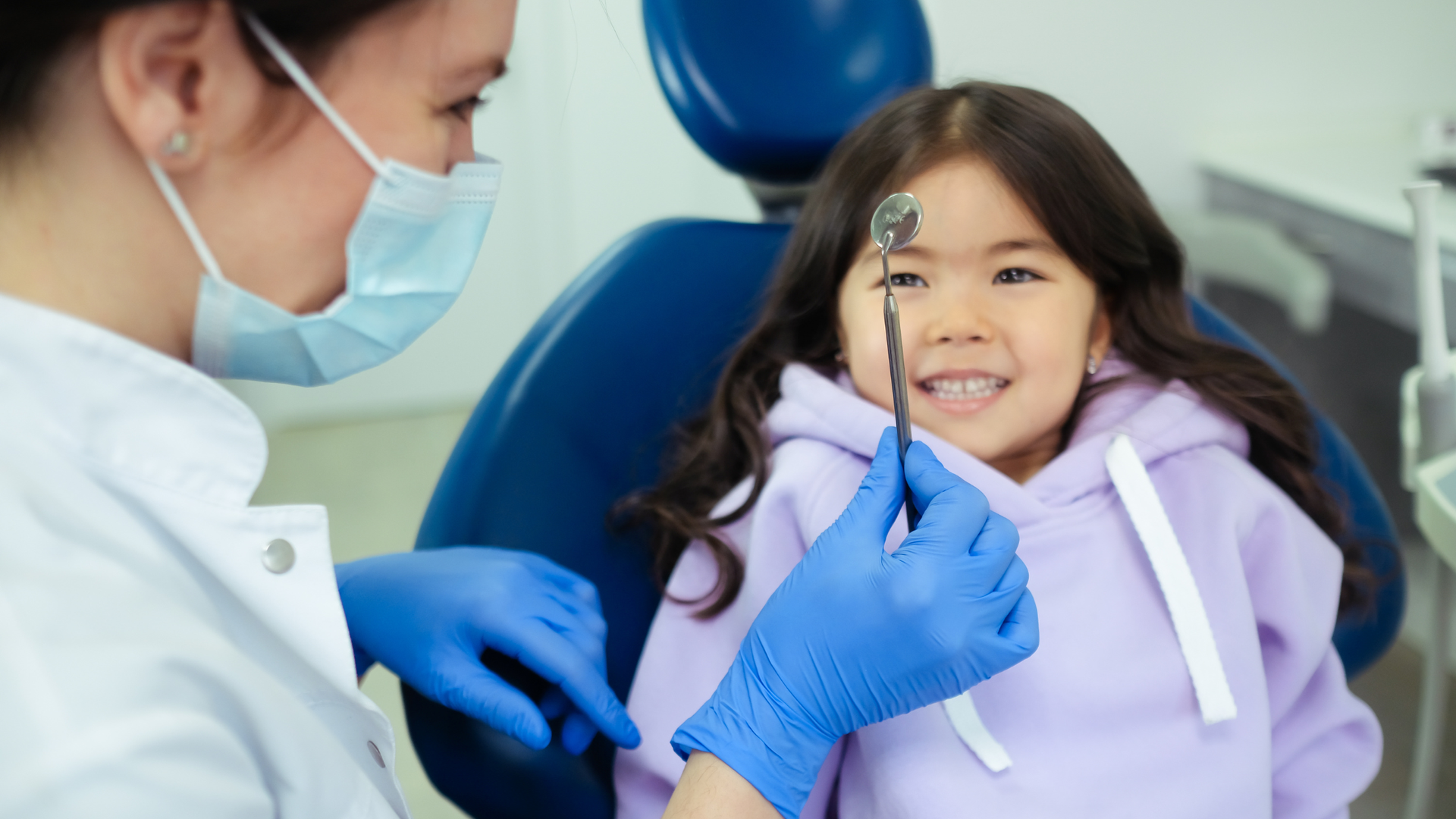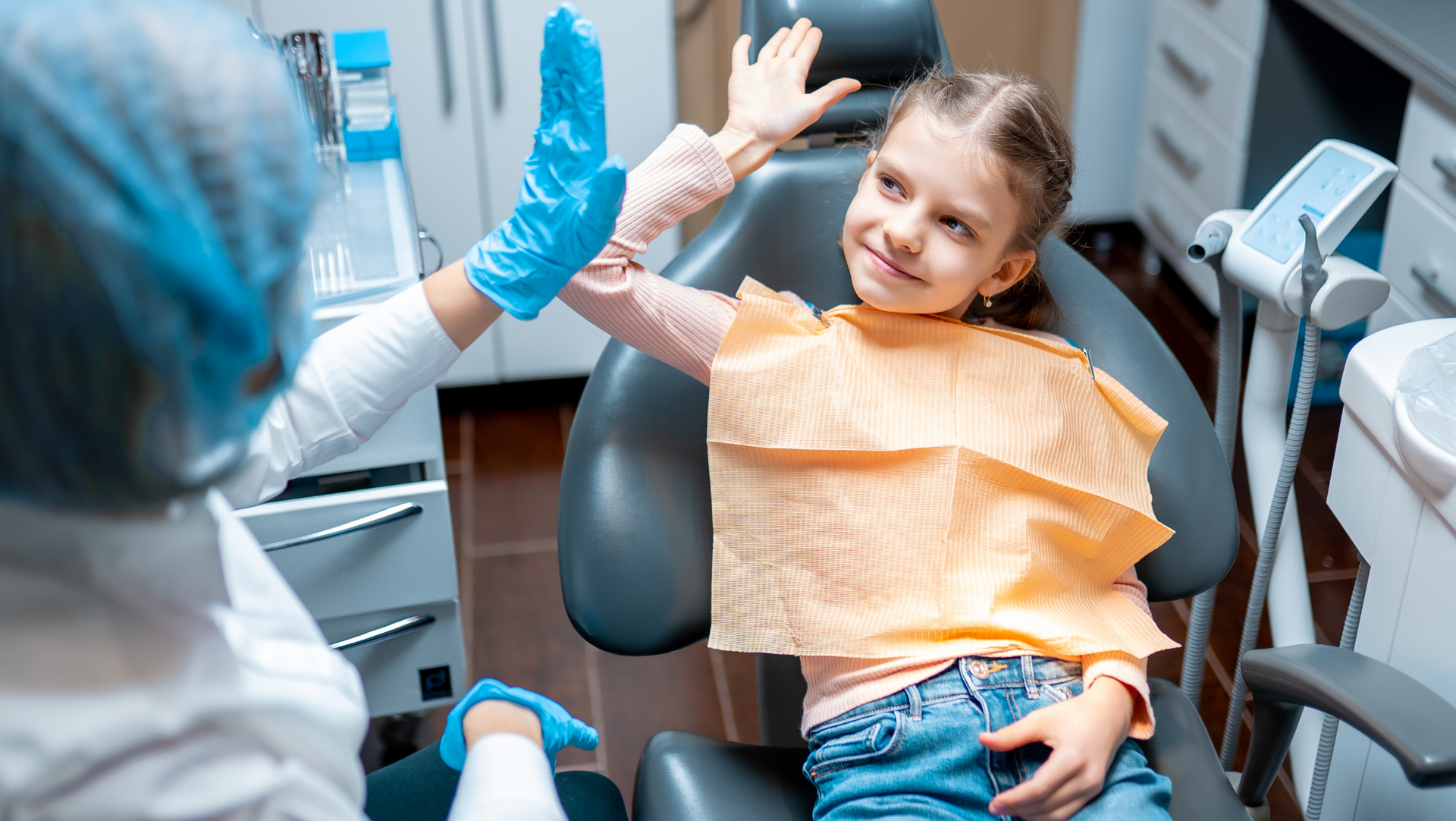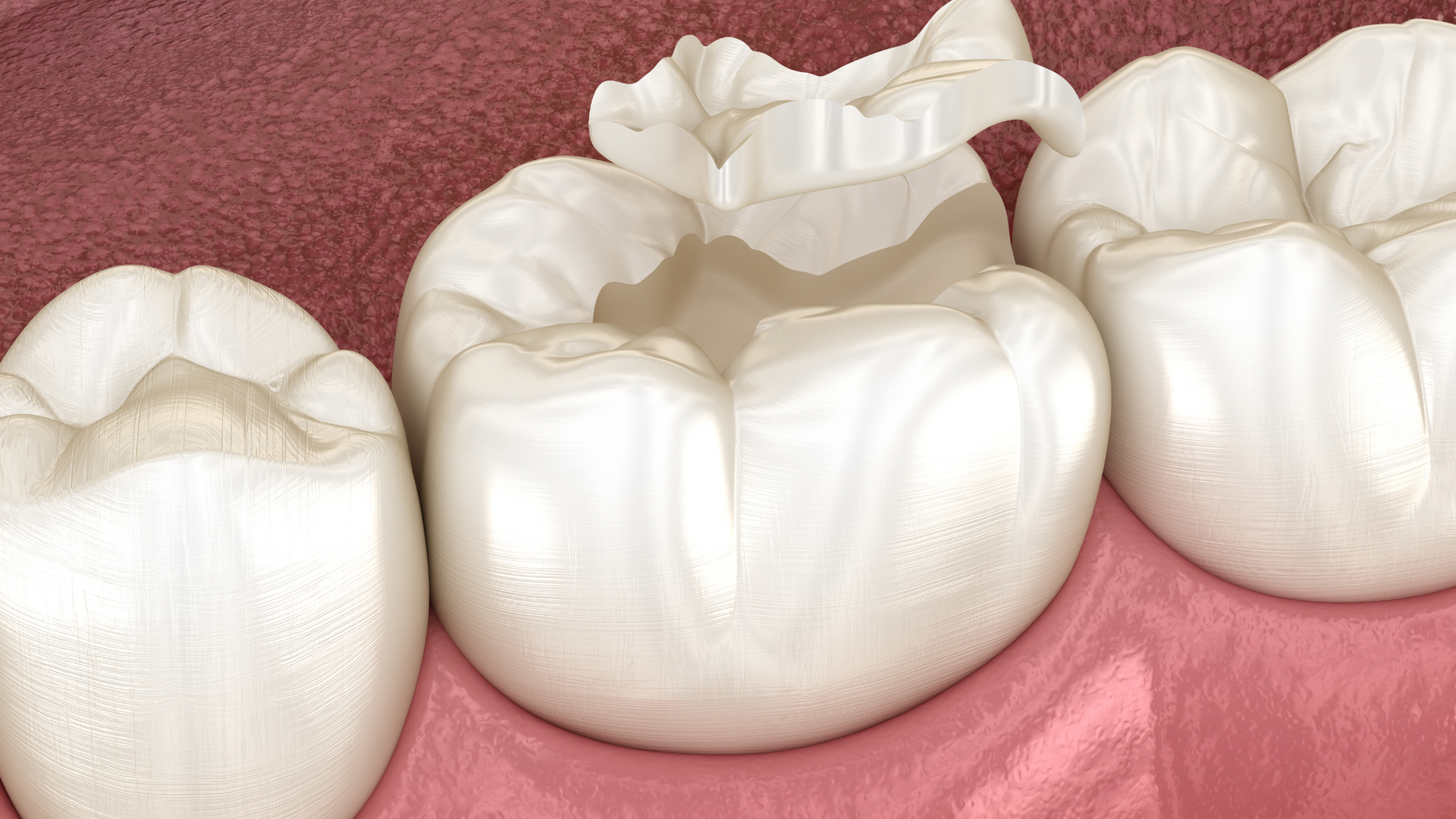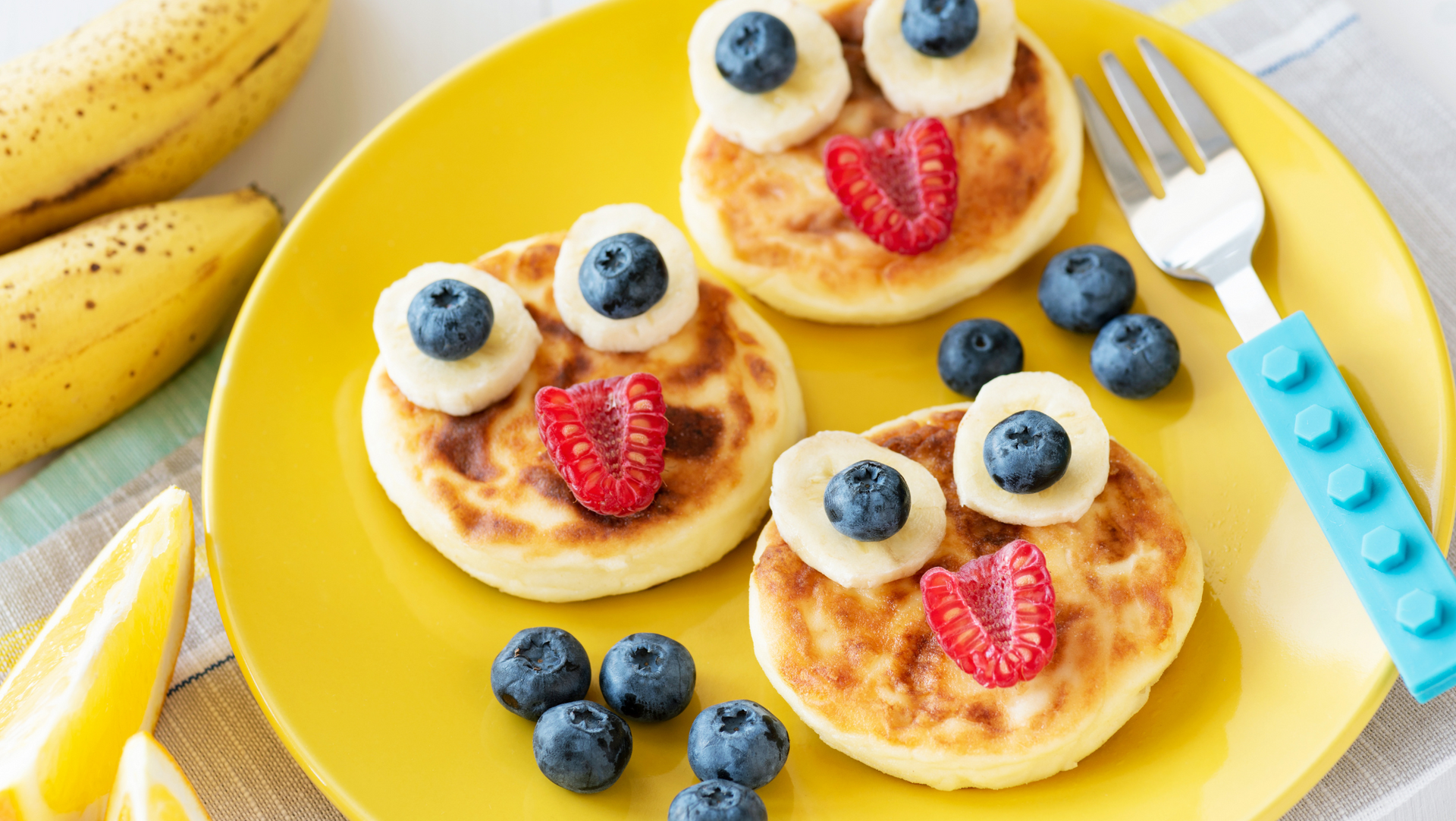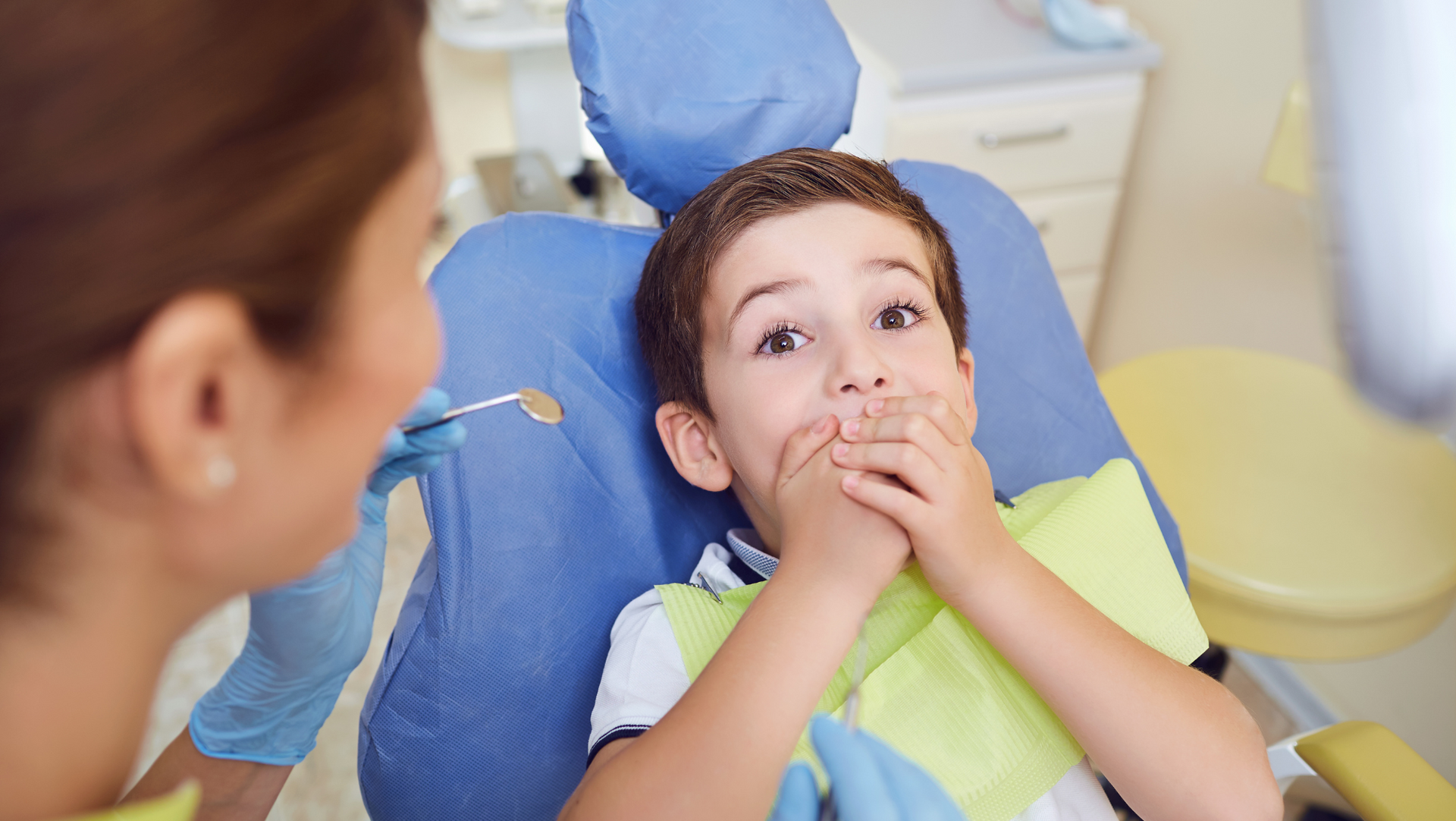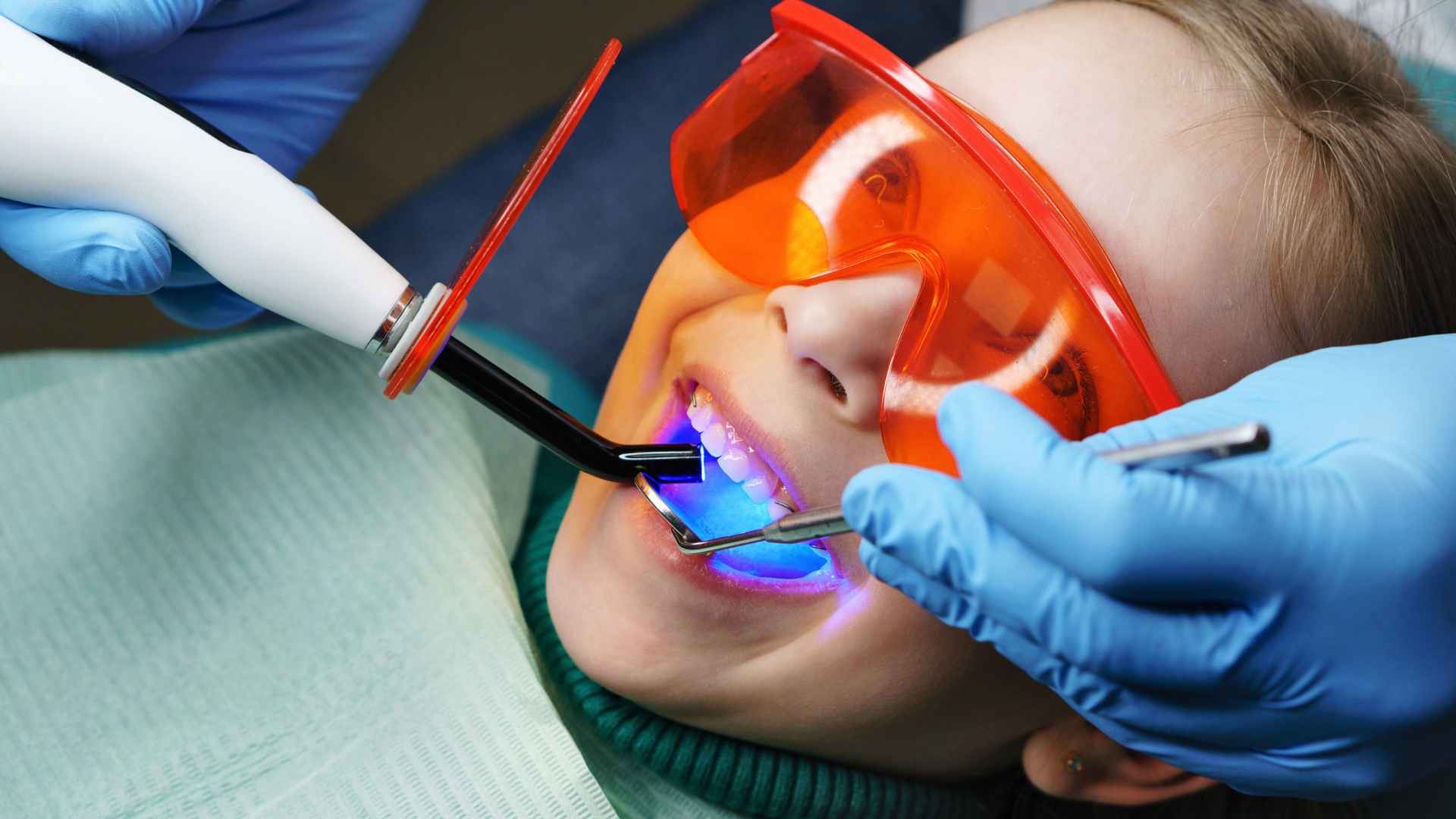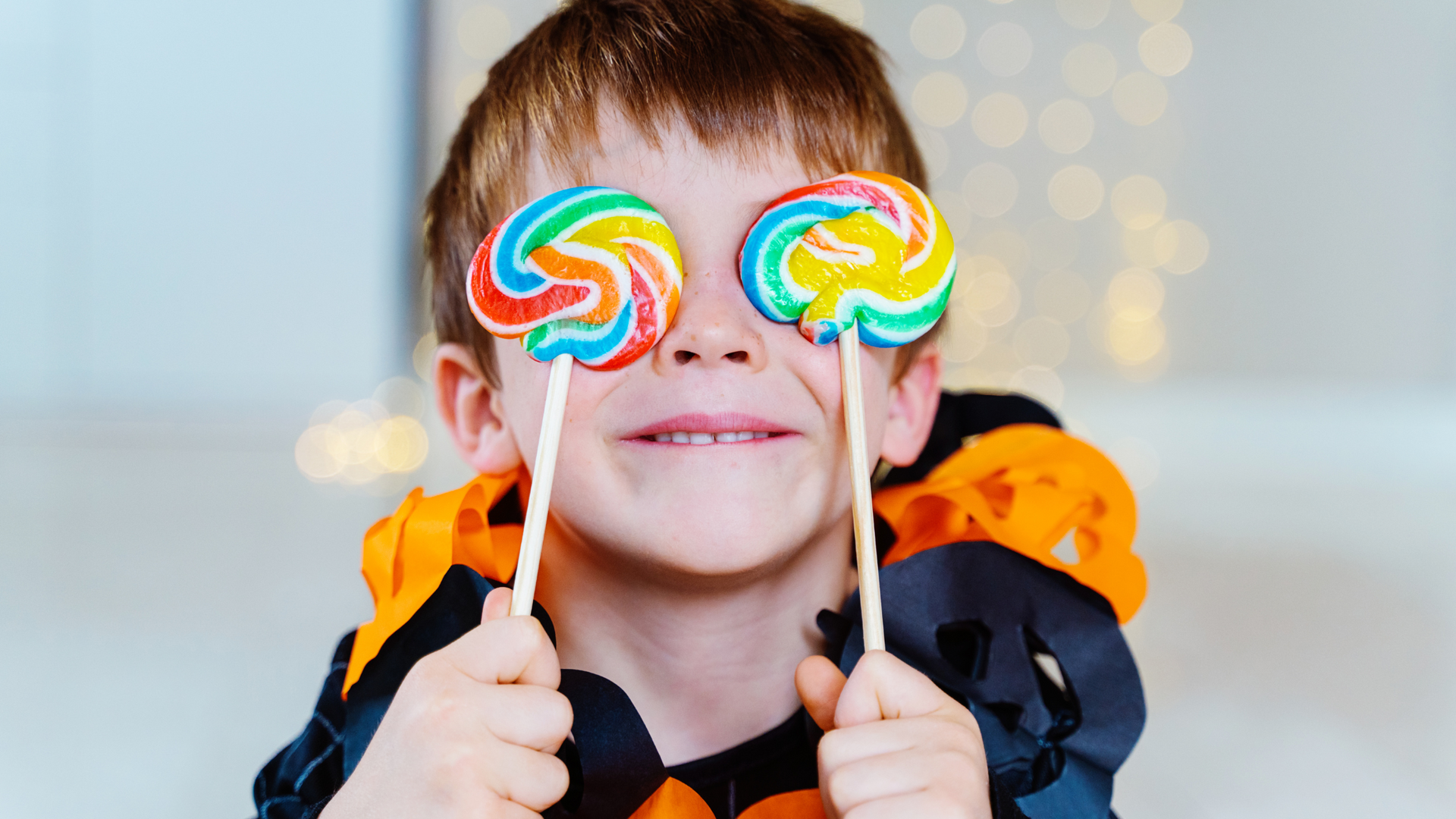Your Ultimate Guide to Brushing Basics for Toddlers
Tiny Teeth, Big Smiles: Your Ultimate Guide to Brushing Basics for Toddlers
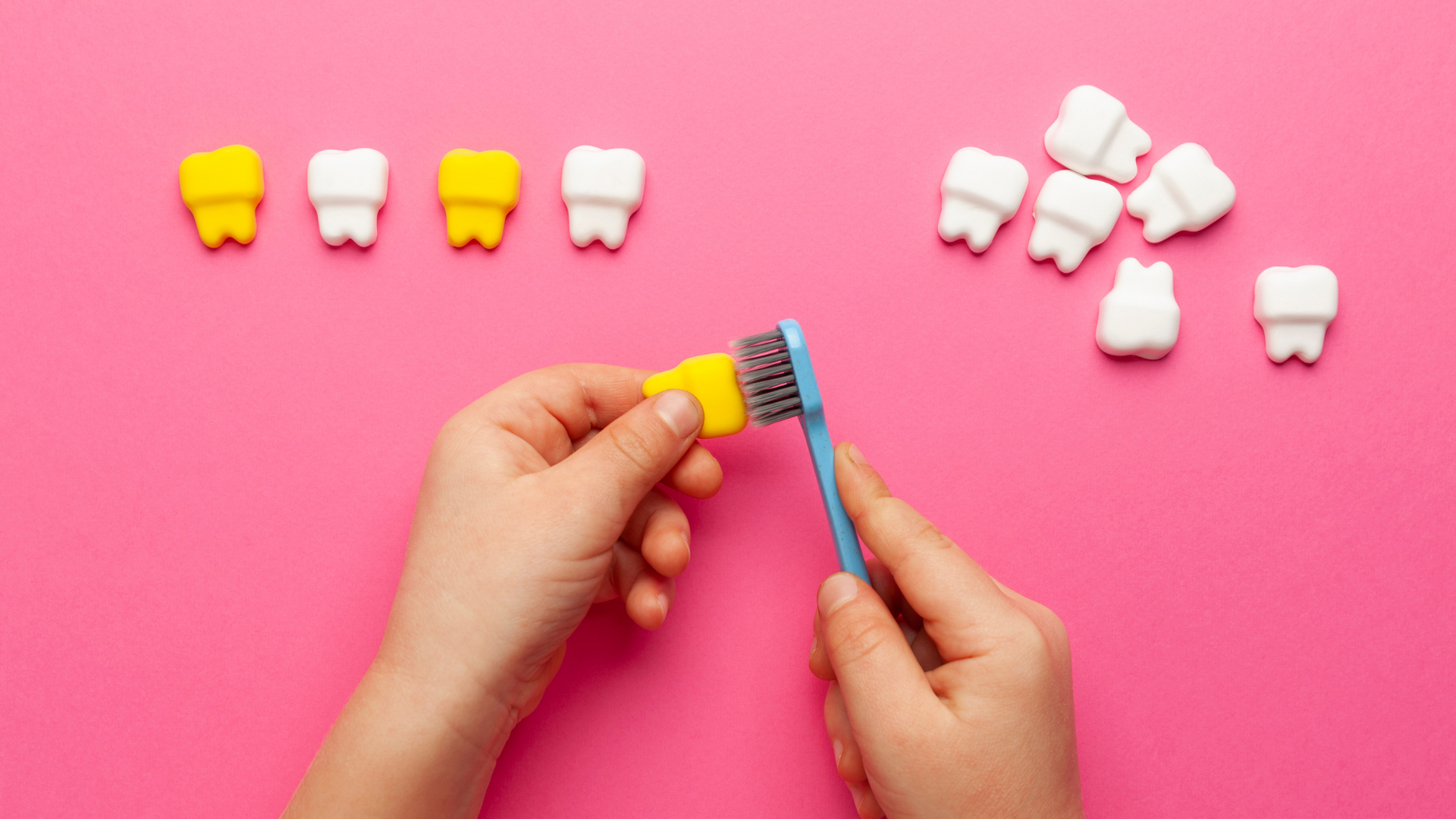
Why Bother? The Surprising Importance of Tiny Tooth Care
It's easy to think, "They're just baby teeth, they'll fall out anyway!" But primary teeth, or baby teeth, are incredibly important for several reasons:
- Proper Nutrition: Healthy teeth allow toddlers to chew comfortably, enabling them to eat a variety of nutritious foods essential for growth. Tooth pain can lead to picky eating or avoidance of certain textures.
- Speech Development: Teeth play a crucial role in forming sounds correctly. Missing or damaged front teeth can impact speech clarity.
- Holding Space: Baby teeth act as placeholders for the permanent teeth developing beneath the gums. Losing a baby tooth too early due to decay can cause adjacent teeth to drift, potentially leading to crowded or crooked permanent teeth later on.
- Preventing Pain and Infection: Tooth decay (cavities) in baby teeth can be painful and lead to infections (abscesses) that can affect overall health and even damage the developing permanent teeth.
- Building Healthy Habits: Starting early teaches children that oral hygiene is a normal, important part of daily life, just like washing hands or taking a bath.
Think of it as preventative care in its earliest form – safeguarding their current comfort and future dental well-being.
Getting Started: Before the First Toothbrush (Yes, Really!)
Oral care begins even before that first little tooth bud emerges!
- Gum Care: After feedings (milk or solids), gently wipe your baby's gums with a clean, damp, soft washcloth or a piece of gauze wrapped around your finger. This removes residual milk sugars and bacteria and helps your baby get accustomed to having their mouth cleaned – a huge advantage when it's time to introduce a toothbrush!
- Why it Matters: Bacteria are present even in a toothless mouth. Cleaning the gums helps reduce bacteria levels and creates a healthier environment for emerging teeth. Plus, it makes the transition to brushing much smoother.
The Grand Entrance: Welcoming the First Tooth (and the First Brush!)
Hooray! That first pearly white has made its debut (usually around 6 months, but it varies greatly). This is the official signal to introduce a toothbrush.
- Choose the Right Brush: Look for a toothbrush specifically designed for infants or toddlers. It should have:
- A tiny head (appropriate for a small mouth).
- Ultra-soft bristles (gentle on delicate gums and new enamel).
- A large, easy-to-grip handle (for you to hold securely).
- Introduce Toothpaste (The Right Amount): The American Academy of Pediatric Dentistry (AAPD) and the American Dental Association (ADA) recommend using a fluoride toothpaste as soon as the first tooth appears. Fluoride is crucial for strengthening enamel and preventing decay.
- Amount (Under Age 3): Use only a tiny smear – about the size of a single grain of rice. This minuscule amount is safe if swallowed and effective in protecting the tooth.
- Amount (Age 3-6): You can increase this to a pea-sized amount.
- The First Brushing Experience: Make it gentle, quick, and positive. Don't worry about perfection initially; focus on getting your toddler used to the sensation.
Gearing Up: Choosing the Right Toddler Dental Tools
As your toddler grows (and gets more teeth!), your tools might evolve slightly, but the principles remain the same.
- The Toddler Toothbrush: Continue using brushes with small heads and soft bristles. You might find brushes with fun characters or colors that appeal to your child. Replace the toothbrush every 3-4 months, or sooner if the bristles become frayed or splayed, or after an illness.
- Fluoride Toothpaste – The Cavity Fighter:
- Why Fluoride? Fluoride is a natural mineral that incorporates into tooth enamel, making it more resistant to acid attacks from bacteria and sugars in the mouth. It can even reverse early stages of tooth decay.
- Safety: Concerns about swallowing fluoride are understandable. However, the recommended "smear" (rice-grain size) for under-threes contains a very small, safe amount of fluoride, even if swallowed. Using the correct amount is key. Always supervise brushing to ensure they aren't eating toothpaste from the tube.
- Flavor: Choose a mild, kid-friendly flavor. Avoid strong minty flavors that might be overwhelming for young palates.
The Main Event: Mastering the Toddler Brushing Technique
Okay, you have the tools. Now, how do you actually brush those tiny teeth effectively? Remember, until around age 6-8, your toddler will need you to do the actual brushing, even if they want to "help."
- Positioning: Find a comfortable position. You could sit your toddler on your lap facing away from you (resting their head against your chest), or have them stand in front of you. Good lighting helps you see what you're doing.
- Apply the Paste: Put the rice-grain sized smear (or pea-sized for 3+) onto the soft bristles.
- Gentle Does It: Use gentle, circular motions. Think "tickling" rather than "scrubbing."
- Cover All Surfaces:
- Brush the outer surfaces (cheek side).
- Brush the inner surfaces (tongue side).
- Brush the chewing surfaces.
- Pay special attention to the gum line, angling the bristles slightly towards the gums.
- Gently brush the tongue to remove bacteria.
- Duration: Aim for two minutes. This can feel like an eternity with a wiggly toddler! Using a timer, playing a song, or breaking it into quadrants can help.
- Frequency: Brush twice a day – typically after breakfast and, most importantly, before bed. Nothing but water should go into their mouth after the nighttime brushing.
- Spit, Don't Rinse (For Older Toddlers): Once your child is old enough to understand (usually around 3 or older), encourage them to spit out the excess toothpaste. Avoid excessive rinsing with water immediately after brushing, as this washes away the beneficial fluoride. A quick spit is sufficient. For younger toddlers who can't spit yet, the tiny smear amount is designed to be safe.
Let's Make it FUN! Turning Brush Time into Playtime
This is where the magic happens, especially for toddlers who view the toothbrush with suspicion! Resistance is normal. The key is consistency, patience, and a hefty dose of fun.
- Sing Songs: Make up silly songs about brushing ("This is the way we brush our teeth...") or play their favorite two-minute tune. Many brushing timer apps have built-in songs.
- Tell Stories: Create a narrative around brushing – the toothbrush is chasing away the "sugar bugs" or cleaning the "tooth houses."
- Monkey See, Monkey Do: Brush your own teeth at the same time. Toddlers love to imitate! Make exaggerated brushing motions and sounds.
- Brush Buddies: Let your toddler "brush" the teeth of a favorite doll or stuffed animal first, then it's their turn.
- Take Turns (Sort Of): Let them hold the brush and "help" for a few seconds (under your guidance), then you take over for the thorough cleaning. This gives them a sense of control.
- Offer Choices: Let them pick their toothbrush (from 2-3 appropriate options) or the (kid-friendly) toothpaste flavor.
- Use a Mirror: Let them watch themselves (and you) brushing in the mirror. Make funny faces!
- Reward Systems (Use Wisely): A simple sticker chart or verbal praise ("Wow, look at those sparkly clean teeth!") can be motivating. Avoid rewarding with sugary treats!
- Keep it Positive: Try not to show frustration (even when you feel it!). If brushing becomes a major battle, take a short break and try again slightly later. Avoid using brushing as a punishment. Frame it as a normal, healthy activity.
Remember the name – The Fun Children's Dentist! We believe incorporating playfulness is key to building positive associations with dental care.
Troubleshooting Toddler Toothbrushing Tantrums
Despite your best efforts, some days will be tougher than others. Here are common challenges and strategies:
- Clamping Mouth Shut:
- Try: Gentle persistence, singing, making silly sounds to encourage opening, turning it into a game ("Can the toothbrush find your teeth? Peek-a-boo!"). Sometimes approaching from the side rather than head-on helps.
- Biting the Toothbrush:
- Try: Offer a safe teething toy to bite before brushing. Use clear, calm language: "Toothbrushes are for brushing, teethers are for biting." If biting persists, gently remove the brush and try again in a moment. Ensure bristles are soft, as hard bristles can be uncomfortable.
- Gagging:
- Try: Use an even smaller smear of toothpaste. Ensure the brush head is appropriately small. Avoid brushing too far back on the tongue initially. Adjust positioning – sometimes having them tilt their chin down slightly helps.
- Refusal/Running Away:
- Try: Stay calm and consistent. Don't skip brushing altogether. Make it part of the non-negotiable routine (like getting dressed). Use distraction techniques or one of the "make it fun" strategies. Sometimes a change of scenery (brushing in the bathtub?) helps. If it's a consistent major struggle, mention it at your next dental visit.
Patience is your superpower here. It often takes time and repetition for toddlers to accept brushing willingly.
Beyond the Brush: Healthy Habits for Healthy Smiles
Brushing is vital, but it's part of a bigger picture for optimal toddler oral health.
- Diet Matters:
- Limit Sugary Snacks and Drinks: Frequent exposure to sugars (cookies, candy, juice, sweetened yogurt, dried fruit, crackers) fuels cavity-causing bacteria. Offer sugary items less often, ideally with meals rather than as standalone snacks.
- Water is Best: Offer water frequently throughout the day, especially between meals. Avoid sending your toddler to bed or nap with a bottle or sippy cup containing anything other than plain water (milk or juice pooling in the mouth overnight is a major cavity risk – known as baby bottle tooth decay).
- Healthy Snacks: Choose tooth-friendly snacks like cheese, plain yogurt, vegetables, and fresh fruits.
- Sippy Cups: Transition from a bottle to a regular cup as soon as possible (around 12-15 months). If using a sippy cup, use it for water primarily. Avoid letting your toddler sip on sugary drinks from it throughout the day.
- Pacifiers and Thumb Sucking: While often comforting, prolonged or intense sucking habits (beyond age 3-4) can sometimes affect jaw development and tooth alignment. Discuss any concerns with your pediatric dentist.
Your Partner in Pearly Whites: The Importance of Pediatric Dental Visits
You're doing amazing work at home, but partnering with a dental professional is essential. This is where the pediatric dental exam comes in.
- The First Visit: The American Academy of Pediatric Dentistry recommends scheduling your child's first dental visit when the first tooth erupts, or no later than their first birthday. This might seem early, but it's crucial for several reasons:
- Prevention: It allows the dentist to spot potential issues early when they are easiest to manage.
- Guidance: It's the perfect opportunity for you to get personalized advice on brushing techniques, fluoride use, diet, and habits specific to your child.
- Familiarization: It helps your child become comfortable in the dental environment from a young age, reducing future anxiety. It establishes their "Dental Home."
- What Happens During a Toddler's Pediatric Dental Exam?
- It's Gentle and Fun! At The Fun Children's Dentist, we specialize in making kids feel safe and comfortable. The first visit is often short and introductory.
- "Lap Exam": Often, you'll hold your toddler on your lap, knee-to-knee with the dentist.
- Quick Look: The dentist will gently lift the lip to examine the teeth and gums, checking for decay, assessing development, and looking at the bite.
- Cleaning (If Appropriate): Depending on age and cooperation, a gentle cleaning or fluoride application might occur.
- Discussion: We'll chat with you about your child's oral hygiene routine, diet, fluoride exposure, and any habits (like thumb sucking). This is your time to ask questions!
- Education: We provide tailored tips for home care.
- Why a Pediatric Dentist? Pediatric dentists have 2-3 years of specialized training beyond dental school focused specifically on the oral health needs of infants, children, adolescents, and patients with special health care needs. We understand child development and psychology, and our offices are designed to be kid-friendly. A regular pediatric dental exam is a cornerstone of preventative care.
- Frequency: After the initial visit, we typically recommend check-ups every six months, allowing us to monitor development and catch any potential problems early. Regular pediatric dental exam appointments reinforce good habits and allow for timely preventative treatments like fluoride varnish or sealants when appropriate.
Growing Up Brushing: Fostering Independence (Slowly!)
As your toddler grows into a preschooler, they'll likely want more independence with brushing. This is great!
- Let Them Try: Allow them to brush their own teeth first. This helps develop motor skills and a sense of ownership.
- Parent Follow-Up is Key: AFTER they've had their turn, you need to follow up with a thorough brushing yourself. Children typically lack the dexterity to clean all tooth surfaces effectively until they are around 6-8 years old (a good guideline is when they can tie their own shoes).
- Supervise Toothpaste Amount: Continue to supervise the amount of toothpaste used (pea-sized from age 3) and encourage spitting, not swallowing.
Building a Foundation for Lifelong Oral Health
Whew! That might seem like a lot, but remember the core principles: Start early, be consistent, make it fun, use the right tools (especially fluoride toothpaste in the correct amount), focus on a healthy diet, and partner with your pediatric dentist.
Those early habits, combined with regular professional care including a thorough pediatric dental exam every six months, set the stage for a future free from preventable dental problems. You're not just cleaning teeth; you're investing in your child's overall health, confidence, and well-being.
Ready to Start Your Child's Smile Journey?
At The Fun Children's Dentist, we're passionate about creating positive dental experiences for little ones. We understand the unique needs of toddlers and strive to make every visit, from their very first pediatric dental exam onwards, a comfortable and even enjoyable adventure. Our preventative dentistry approach focuses on education and early intervention to keep smiles bright and healthy from the start.
Don't wait! Establish your child's Dental Home today.
Visit our website at [Insert Link to The Fun Children's Dentist Website - ideally the Preventative Dentistry Page: https://www.thefunchildrensdentist.com/preventative-dentistry] to learn more about our services or call us at [Insert Phone Number] to schedule your toddler's appointment. Let's work together to give your child the gift of a healthy, happy smile!
Blogs and Resources for Happy and HealthyTeeth

